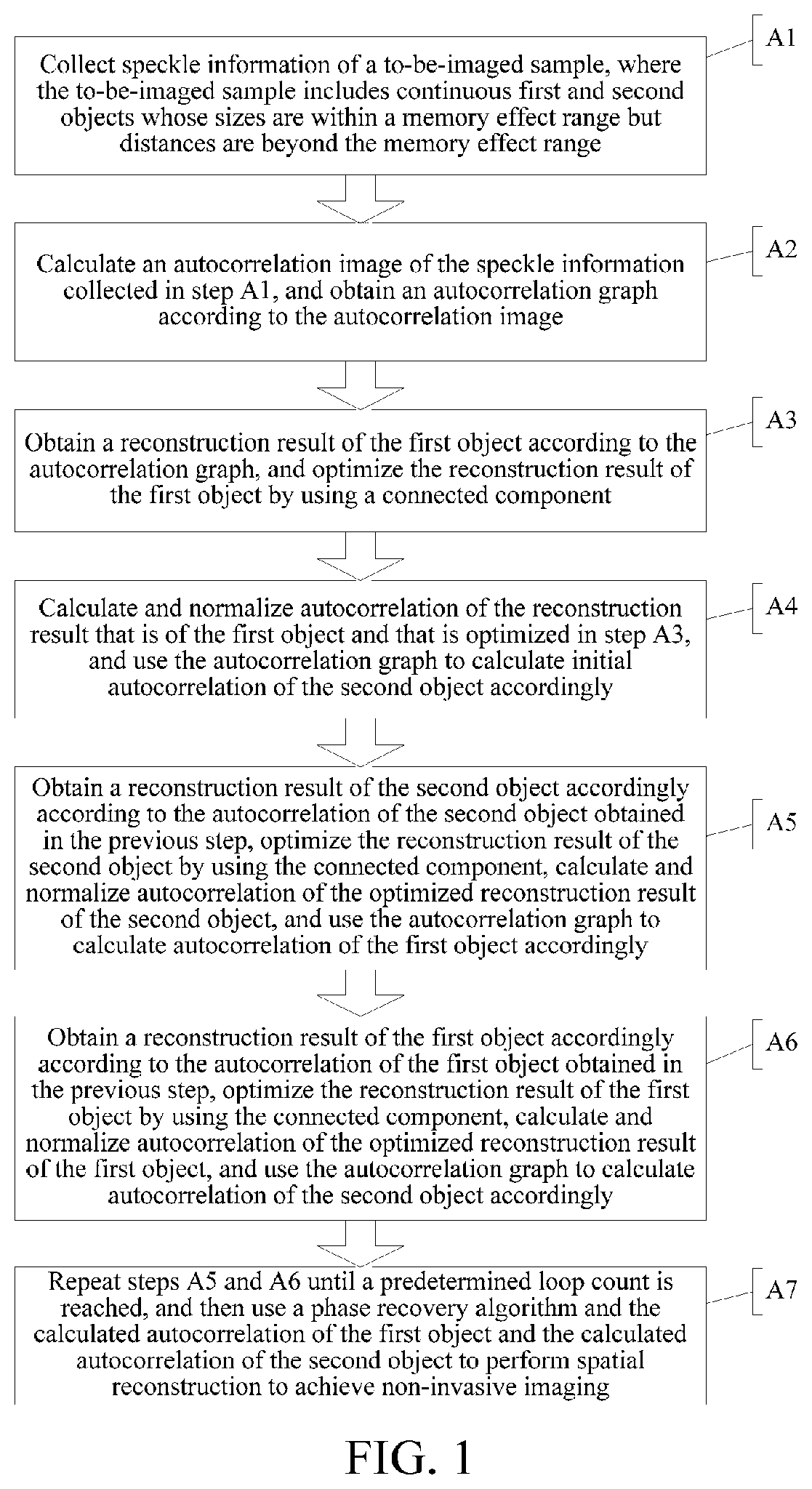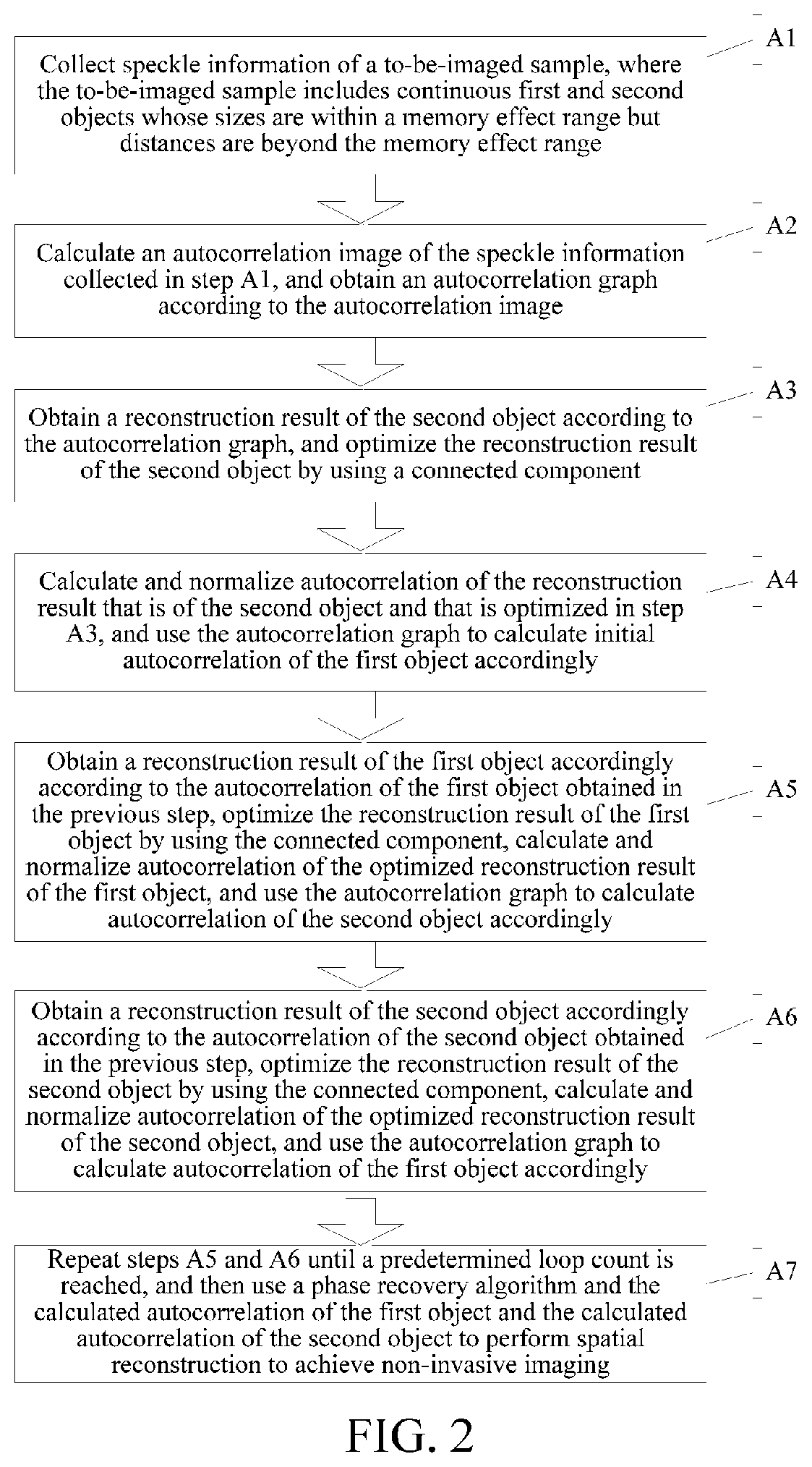Non-invasive scattering imaging method beyond memory effect range based on connected component optimization
a component optimization and non-invasive technology, applied in the field of computer imaging, can solve the problems of unfavorable direct analysis of object information in a traditional optical system, and large application scenarios
- Summary
- Abstract
- Description
- Claims
- Application Information
AI Technical Summary
Benefits of technology
Problems solved by technology
Method used
Image
Examples
Embodiment Construction
[0034]The present invention is further described below with reference to the accompanying drawings and preferred embodiments.
[0035]As shown in FIG. 1, a preferred embodiment of the present invention discloses a non-invasive scattering imaging method beyond a memory effect range based on connected component optimization, including the following steps:
[0036]A1: Collect speckle information of a to-be-imaged sample, where the to-be-imaged sample includes two continuous objects whose sizes are within a memory effect range.
[0037]In particular, a single-shot speckle correlation imaging system is used and the two objects whose sizes are blocked by a scattering medium within the memory effect range but distances are beyond the memory effect range is set as the to-be-imaged sample, where speckle information that is of the sample and that is collected through non-correlated light irradiation may be represented as:
I=O1*PSF1+O2*PSF2 [0038]O1 and O2 respectively represent the first object and the...
PUM
| Property | Measurement | Unit |
|---|---|---|
| sizes | aaaaa | aaaaa |
| phase recovery algorithm | aaaaa | aaaaa |
| computer imaging | aaaaa | aaaaa |
Abstract
Description
Claims
Application Information
 Login to View More
Login to View More - R&D
- Intellectual Property
- Life Sciences
- Materials
- Tech Scout
- Unparalleled Data Quality
- Higher Quality Content
- 60% Fewer Hallucinations
Browse by: Latest US Patents, China's latest patents, Technical Efficacy Thesaurus, Application Domain, Technology Topic, Popular Technical Reports.
© 2025 PatSnap. All rights reserved.Legal|Privacy policy|Modern Slavery Act Transparency Statement|Sitemap|About US| Contact US: help@patsnap.com


